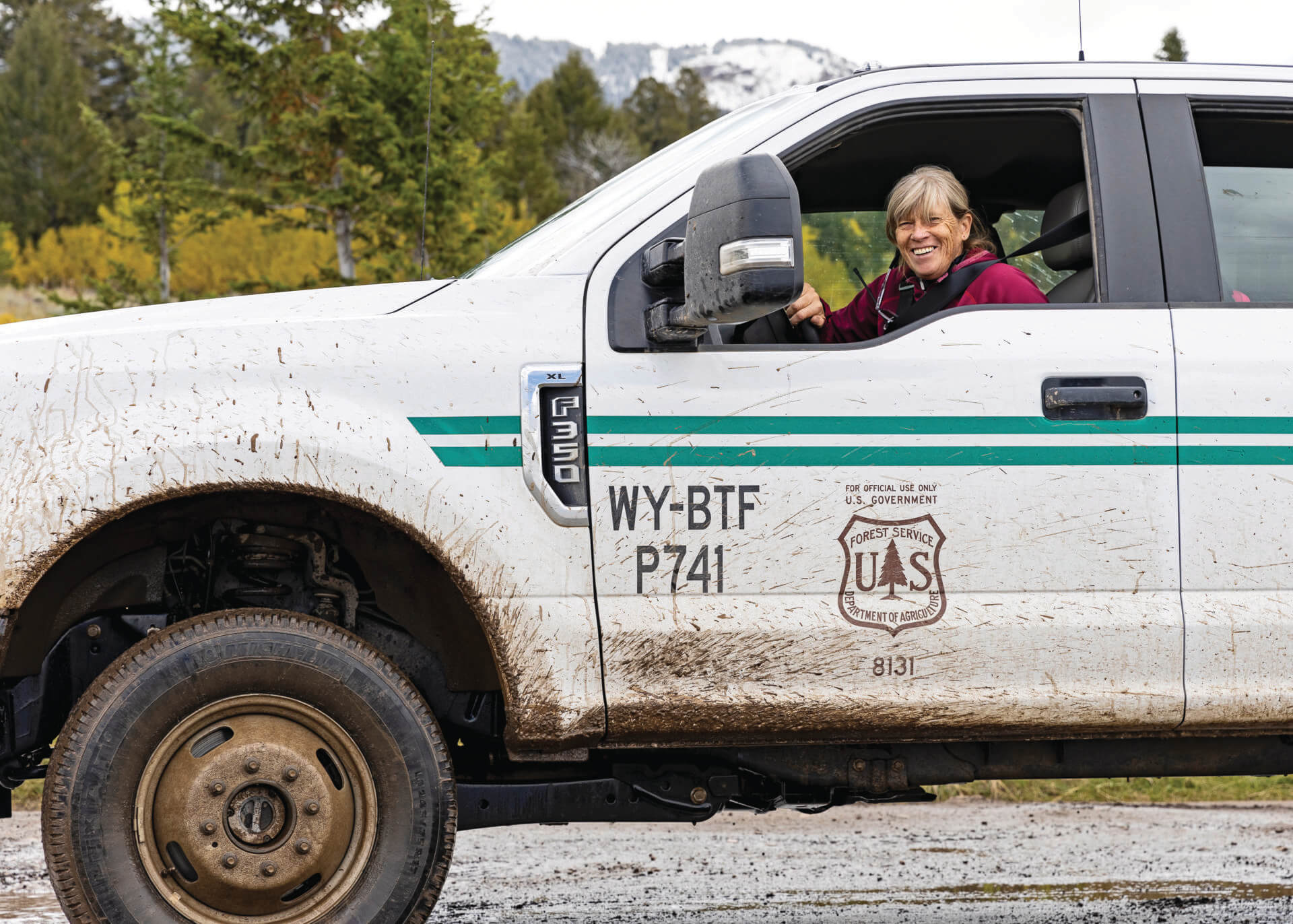Read The
Current Issue
Lesley Williams-Gomez
The Bridger-Teton National Forest fire-prevention specialist works to help people understand the amazing force fire can be.
// By Rachel Walker

When Bridger-Teton National Forest fire-prevention specialist Lesley Williams-Gomez arrived in Wyoming to fight wildfires in 1994, she stepped into a career that bridged two of her passions: outdoor adventures and ecology. She would also forge new territory as one of the first female smokejumpers, leaping from airplanes into areas where wildland fires were burning to help battle the flames. These pursuits delivered equal parts adventure and public service while satisfying Williams-Gomez’s innate curiosity about the natural world.
“I’m passionate about being outside and fire management,” Williams-Gomez says. “Fire ecology is such an important piece of this ecosystem that this career path seemed like a no-brainer.”
Today, having spent more than 20 years working for the USDA Forest Service on fire-prevention education and natural resource protection, Williams-Gomez is a familiar face in and around Jackson Hole as she travels to campsites, neighborhoods, and schools to teach people how to prevent wildfires. In addition to teaching about campfire safety (see her top tips below), Williams-Gomez also shares details about the importance of fire on the landscape, how to best protect private lands from catching fire, and how to learn more and spread the word so that fire prevention becomes a community effort. This includes thinning trees and brush on private land that abuts public land, minimizing flammable materials on private property—replacing a shake roof with a metal one, for instance—and creating “defensible spaces,” areas around structures where fuels and vegetation have been greatly reduced or removed in order to slow the spread of a potential wildfire.
“Fire ecology is such an important piece of this ecosystem that this career path seemed like a no-brainer.”
Generally, Williams-Gomez has found an amenable audience that is willing to learn. “Kids are great,” she says. “I love going into schools and talking with them so then they go home and talk to their parents. If we teach kids how to put out a campfire and how to be responsible with fire, that’s indispensable.”
As she shares her knowledge, Williams-Gomez strives to explain the complexity and nuances of wildfire in a way that fosters respect for the natural world. Fire is an essential part of the landscape that helps vegetation rejuvenate and provides important wildlife habitat, but decades of fire suppression have given rise to destructive conflagrations that cause significant environmental and material damage. “Fire is an amazing force,” she says. “It puts so many nutrients back in the soil, and it’s good for habitat. But it’s horrible for communities if they’re not fire-adapted.”

Lesley Williams-Gomez Shares Essential Facts About Campfires and Wildfire Risks:
1. If you don’t know how to put out a fire, you should not have a campfire.
2. Always check campground signage to make sure fires are allowed before lighting one. (A campfire is usually allowed when it is not windy or dry and you have enough water with you to put it out properly.)
3.Have at least five gallons of water and a shovel—the best things to extinguish a campfire.
4.To extinguish a campfire, first douse it with water. Stir it, and then get your hand close enough to feel it. Douse, stir, and feel until the fire is cold to the touch.
5.Yes, you absolutely have to feel your extinguished campfire. Don’t just look at it. If it’s a little warm, it’s not out and it will only take some afternoon wind to be reignited.
6.If you see smoke and suspect a wildfire, call 911. JH




